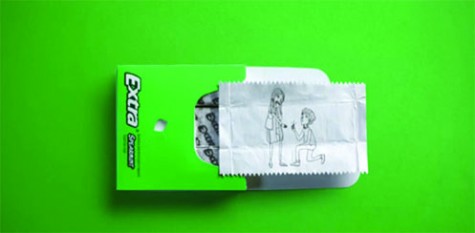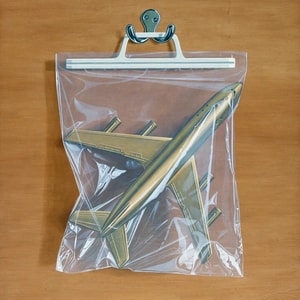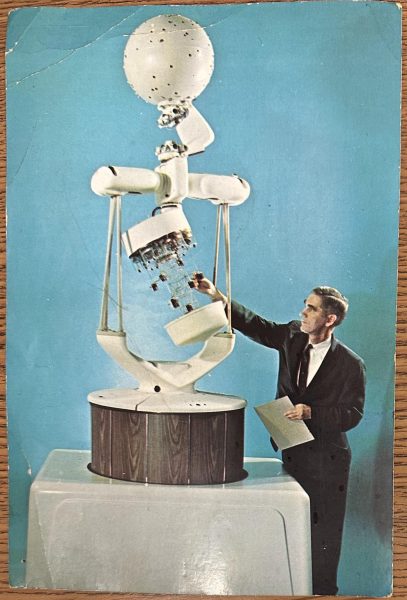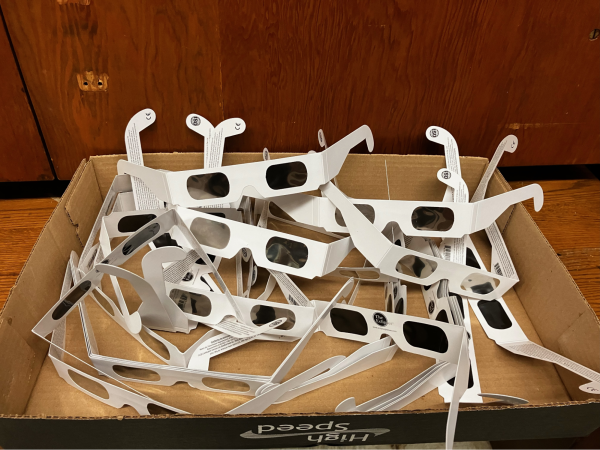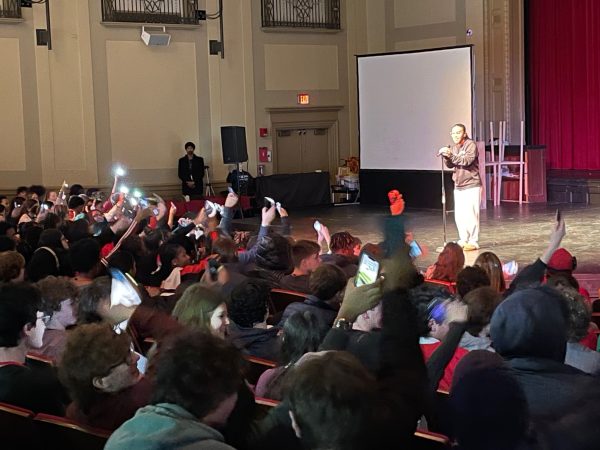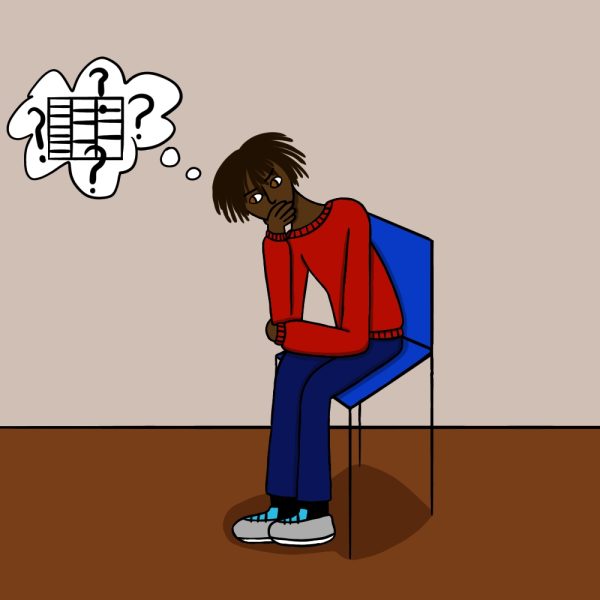Repainting Our Sexist, Pink and Blue Planet
Unnecessarily gendered products subconciously segregate
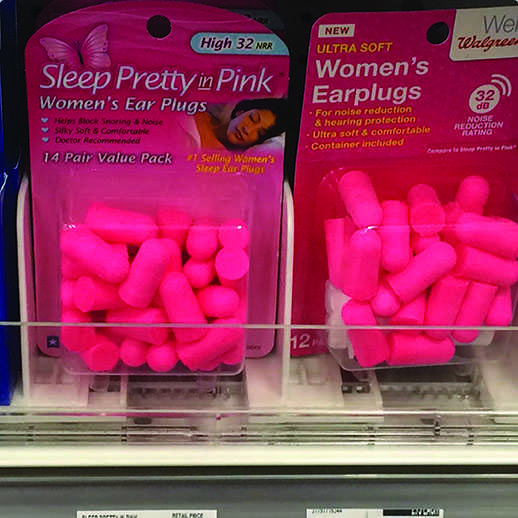
A mystifying variety of products, from laxatives to toys to even ear plugs, are unnecessarily gendered. Most of the time, men’s versions of products are bigger and bulkier, while the same products marketed toward women are typically delicate and colored pink.
Gender-specific conditioning begins seconds after a baby’s dramatic entrance into the world, when the neonatal nurse places a blue or pink cap on the newborn’s head.
If the infant aligns with the opposite gender years later, the 21st century is fortunately more tolerant of blurring — or crossing — the gender line.
Yet, immediately after the baby first opens its tiny eyes, the child’s world turns pink or blue.
Even if the parents opted for gender-neutral baby supplies before their baby’s sex was determined, there is ultimately no escaping the hegemonic commercial divide between sparkles and camouflage, or Barbies and Hot Wheels.
Anyone who has perused a store’s toy section, or has ordered a Happy Meal from McDonald’s, can distinguish a “boy’s toy” from a “girl’s toy.”
Girls, according to these toy aisles or cheap Happy Meal mini toys, love dolls, ponies, pink and glitter. Boys apparently like race cars, action figures, Nerf guns and anything blue, brown or orange.
Consumers can wander mindlessly through toy aisles, which are either blatantly labeled by gender or display overwhelming heaps of pink and blue.
They’ve no need to ask themselves, “Would my daughter want a Captain America shield or a tea set?”
They don’t pause to wonder, “Should I get my brother a Barbie doll or a Stormtrooper helmet?”
Some companies have created two different gendered versions of the same product, furthering their stereotype-inspired brainwashing.
The famous building block toy company, Lego, recently launched a line of building sets aimed exclusively at girls. These “Friends” sets, including “Heartlake Hair Salon” and “Butterfly Beauty Shop,” are sold in purple boxes that line the girls’ toy aisles.
Marketing is a tricky and complicated matter. Every product, aside from most food products or an Adele album, targets a certain audience.
Based on the girl and boy toy divisions, marketers seem to believe that boys like Transformers and girls love babydolls. However, it raises the chicken versus egg question of which came first: boys’ and girls’ zeal for certain toys, or the toys thrust upon the genders?
Separating toys by gender may be convenient for the lazy shopper, but it isn’t fair to the little boys who like dolls nor the little girls who like Nerf guns. There is no reason that a boy can’t play with a Barbie doll, but in this society he will have to brace himself against teasing from peers and family members.
If princess playsets weren’t sold in bright pink boxes in the store aisle labelled “girls,” and were instead sold in a neutral white box, girls would not be repelled.
Instead, the product might welcome interest from both boys and girls. It might be more welcoming for both genders.
WalMart has taken strides to blur the pink and blue color line, especially by featuring moms and daughters in their commercials for Star Wars, a traditionally male-dominated movie series.
Still, with all of the gender-specific store sections for gender-specific toys, the marketing world has a long way to go before the pink and blue color line is completely erased.
I remember my rare childhood trips McDonald’s quite vividly, perhaps because they were only a few years ago.
I always had one of the month’s featured toys in mind as I tore through my Happy Meal, all too excited for a french fry and that special toy.
Nine out of 10 times, I would take the toy I was given — a My Little Pony statue or maybe a slightly disfigured Polly Pocket doll — back to the counter and politely ask the employee for a “boy’s toy.”
I would add my newest treasure, whether it was a miniature Nerf gun or a shiny Hot Wheels race car, to my growing pile of beloved Barbies and Littlest Pet Shop figurines. At McDonald’s, the Nerf and Barbie toys were housed in separate halves of the display case where kids like me, seeking a break from their pink or blue world, would tug on their parents’ hands and bashfully ask for the opposite gender’s toy.
Yet, once the Hot Wheels race car was mixed into my Barbie collection, it was no longer a “boy’s toy.”
It was simply “my toy.”
They all were my toys, and though I loved some more than others, my preferences never felt forced upon me. Perhaps this is because there was no gender-specific marketing in my play area.
There was only one expectation: play and have fun.
Before you think gendered marketing is not a significant problem, consider that products targeting female consumers add to the economic inequity woman already endure.
BuzzFeed recently collected a series of angry Tweets that showcase ridiculous side-by-side comparisons of everyday products and their female-targeting counterparts, including Goldfish crackers and toolsets.
Even more concerning were the pink and green Dulcolax laxative boxes. The ladies’ laxatives contained fewer tablets per box than the men’s, but both were the same price. This unfair pricing has become known as the “gender tax,” which sets pink products at a higher price simply because they are meant for women. A report from the New York City Department of Consumer Affairs revealed that these female products cost 7 percent more on average than the same product for males.
Socks, deodorants, children’s scooters and even more obscure items such as rib support bands cost significantly more for women than they do for men.
In 2016, women in the United States are paid less for doing the same work, and are expected to spend more on the same products, than men.
A deep color divide exists, making boys choose deeper, darker, more “masculine” colors and forcing girls to have bright, lively and “feminine” colors. Girls and boys are supposed to play with pink or blue versions of the same toy.
Our country’s sexist society feasts on consumers who are unaware of the gender tax. The gender tax exists because gendered products exist.
Sexist toy aisles exist because gendered products exist. Gendered products exist because our country is stuck in our biased ways, determined to stay in pink or blue lanes that are leading us backward from the twenty-first century.
These inequalities divide us unessecarily, and create gender-based boundaries for equality.
There is no reason a woman should pay more for her laxatives than the constipated man next to her.
There is no reason a boy should feel unwelcome in the doll aisle.
There is no reason a boy should have to choose blue and black and a girl pink and purple.
There is no reason building blocks should come in gendered boxes.
There is no reason for unnecessarily gendered products.
No reason at all.

